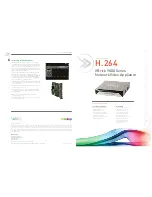
SAMLEX AMERICA INC. | 21
7.8 REDUCTION IN USABLE CAPACITY AT HIGHER DISCHARGE RATES –
TYPICAL IN INVERTER APPLICATION
As stated above, the rated capacity of the battery in Ah is normally applicable at a dis-
charge rate of 20 Hours. As the discharge rate is increased as in cases where the inverters
BSFESJWJOHIJHIFSDBQBDJUZMPBETUIFVTBCMFDBQBDJUZSFEVDFTEVFUPi1FVLFSU&GGFDUw
5IJTSFMBUJPOTIJQJTOPUMJOFBSCVUJTNPSFPSMFTTBDDPSEJOHUPUIF5BCMF
TABLE 7.3 BATTERY CAPACITY VERSUS RATE OF DISCHARGE – C-RATE
C-Rate Discharge Current
Usable Capacity (%)
C/20
100%
C/10
87%
C/8
$
75%
C/5
70%
$
C/2
50%
1C
40%
5BCMFTIPXTUIBUB"IDBQBDJUZCBUUFSZXJMMEFMJWFS JFGVMM"IDBQBDJUZ
if it is slowly discharged over 20 Hours at the rate of 5 Amperes (50W output for a 12V
inverter and 100W output for a 24V inverter). However, if it is discharged at a rate of 50
Amperes (500W output for a 12V inverter and 1000W output for a 24V inverter) then
UIFPSFUJDBMMZJUTIPVMEQSPWJEF"I)PVST)PXFWFS5BCMFTIPXTUIBUGPS
Hours discharge rate, the capacity is reduced to 50% i.e. 50 Ah. Therefore, at 50 Ampere
discharge rate (500W output for a 12V inverter and 1000W output for a 24V inverter) the
CBUUFSZXJMMBDUVBMMZMBTUGPS"I"NQFSFT)PVS
7.9 STATE OF CHARGE (SOC) OF A BATTERY – BASED ON
“STANDING VOLTAGE”
The “Standing Voltage” of a battery under open circuit conditions (no load connected
UPJUDBOBQQSPYJNBUFMZJOEJDBUFUIF4UBUFPG$IBSHF 40$PGUIFCBUUFSZ5IFi4UBOE
-
ing Voltage” is measured after disconnecting any charging device(s) and the battery
MPBE TBOEMFUUJOHUIFCBUUFSZiTUBOEwJEMFGPSUPIPVSTCFGPSFUIFWPMUBHFNFBTVSF
-
NFOUJTUBLFO5BCMFTIPXTUIF4UBUFPG$IBSHFWFSTVT4UBOEJOH7PMUBHFGPSBUZQJDBM
77CBUUFSZTZTUFNBU¡' $
SECTION 7 |
General Information on Lead Acid
Batteries
















































